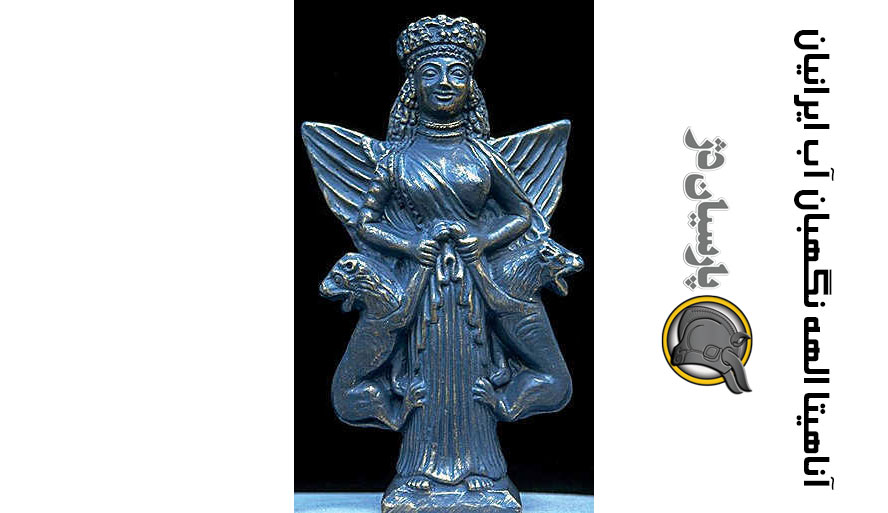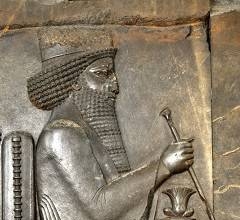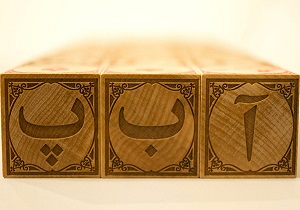Anahita is the guardian goddess of Iranian water
Anahita is the guardian goddess of Iranian water – "Anahita" means pure and free from pollution In the belief of ancient Iranians, she was the goddess of water, the guardian angel of springs and rain, as well as a symbol of love and friendship.. This belief has existed in Iran since before Zoroastrian era and has been taken into consideration in the following eras as well.
Paying attention to Anahita has been customary in Iran since the period of Ardeshir II Achaemenid and continued in the following historical periods, namely Parthian and Sasanian.. In the inscriptions left from these historical periods, references and images of Anahita can be seen next to the name of Ahura Mazda..
"In the bas-relief of Taq Bostan, Sassanid king Khosrow Parviz is standing between Ahuramazda and Anahita. In this bas-relief, Anahita, who is standing on the right side of the king, wears a crown similar to Ahura's and holds a frieze ring in one hand and a jar with water pouring out of it in the other hand.
In honor of this Iranian goddess, many temples and statues were built in the historical periods before Islam in the land of Iran.. Memories of Anahita (Including temples and inscriptions) It is left in Hamedan, Shush, Kazerun and Azarbaijan, Kermanshah and Kangavar. Anahita Temple in Kangavar is the most famous temple attributed to Anahita in Iran.
In the Iranian calendar, the 10th day of the ancient month of Aban, equal to the current 4th of Aban, is marked as the Abangan festival. Abangan Anahita celebration(Anahid), is the goddess of water. During the Abangan festival, Iranians, especially women, prayed to the goddess of water by the sea or rivers..
Anahita is the guardian goddess of Iranian water – Historical background of Anahita temple
The building of Anahita temple is located in the city of Kangavar, one of the cities of Kermanshah province. This building is built on a hill with a height of 32 meters and dimensions of 209 meters by 224 meters. The height of the pillars of this building is three to one compared to their diameter, and this makes it unique among all the temples in the world.. Anahita Temple is the second stone building in Iran after Persepolis. Although there is a difference of opinion about the nature of this building and some have considered it the unfinished palace of Khosrow Parviz, but the more famous theory considers the building to be a temple for the goddess Anahita..
The first archaeological excavations were carried out in 1347, and according to preliminary research, the building was considered a place to worship the goddess Anahita during the Parthian period.. In 1354, the subsequent excavations and the discovery of a similar arched stone in Sarpol Zahab proposed the theory that this may be the remaining building of one of the palaces of Khosrow Parviz in the Sassanid period, although the existence of other evidences gives more strength to the first theory.
This temple has been respected since the Parthian era and Tiridats (Tirdadha - a number of Parthian kings) They were crowned in the temple of Anahita. Anahita Temple was also used during the Sasanian period and was rebuilt. Excavations have shown that this temple was used for other purposes during the Seljuk, Ilkhani, Safavid, and Qajar periods, and traces of each of these historical periods have been left in the temple..
In the first half of the 1st century AD, Isidore Charax, the Greek geographer, was the first to mention the temple of Anahita in his book and called it the temple of Artemis.. From the 9th to the 14th century, Islamic historians visited this region and recorded their observations in their reports.. Ibn Faqih has written in the famous book Al-Baldan: "There is no more wonderful pillar than the Anahita Kangavar temple."
Anahita Temple has gradually been destroyed over the years. Architectural works consisting of plaster and lime were used by local people to prepare fresh plaster and lime. During thousands of years, Kangavar people have destroyed the remains of Anahita Temple by melting the plaster and lime in the historical site.. After the Kangavar earthquake in 1336 and the people's constructions, the temple almost turned into a ruin.
Anahita is the guardian goddess of Iranian water – Current status of Anahita Temple
Undoubtedly, in terms of historical value, Anahita Temple is one of the most prominent works and cultural heritages of Iran. Also, the unique features of this historical site can be effective in attracting domestic and foreign tourists and the economic prosperity of the region.. While this work has been waiting to be registered in the UNESCO world list for many years, there is still no will to prepare for the purpose of world registration..
One of the obstacles to registering this work in the UNESCO world list is the lack of completion of the research on the building's history and the lack of confirmation of the theories related to its historical history.. Of course, not only the research activity in this area has been stopped for years, but also the necessary measures to preserve and preserve the obtained works and prepare the historical site of the temple are not done..
Anahia Temple has faced various problems in recent years. Being surrounded by the fence of fruit and vegetable containers, the problem of the smell of sewage covering the historical area, becoming a place for thugs and drug addicts to gather, becoming a place to stick election campaign posters are just some of the problems of the last few years. These are historical sites. A look at this list of basic problems shows the neglect of the officials to preserve this historical monument.
In the last two-three years, although the situation has improved a little, there is still a long way to go before Anahita Temple becomes a suitable tourist destination.. The cleaning of the area has not been completed and the proper route for tourists has not been considered, the remnants of propaganda, revolutionary and election slogans and personal memorabilia can be seen on historical monuments, the historical area is sometimes a place for local children to play during the day and a gathering place for other people at night. The existence of basic comfort facilities for tourists in the region is still unknown. The following pictures taken in the summer of 2006 show the latest state of Anahita Temple.







Hello. Good time. Where is the source of your text?
Is it true that they say that Anahita's name appears as an angel in the book of Zoroastrians? Please tell me the answer in my blog, thank you.
Let me know if the content is interesting
درود
To get the latest content, go to the right (Get our latest articles ) Click and register your email